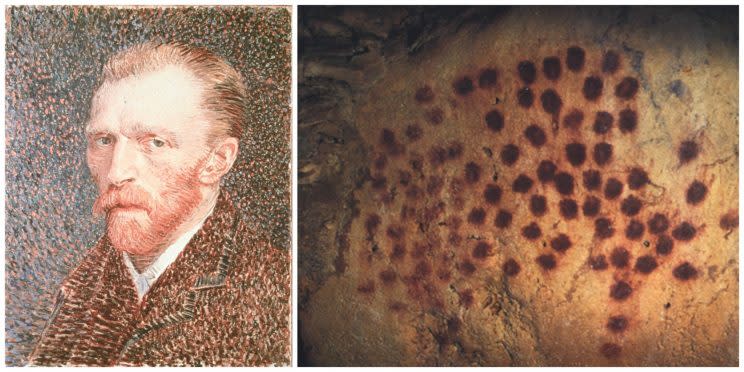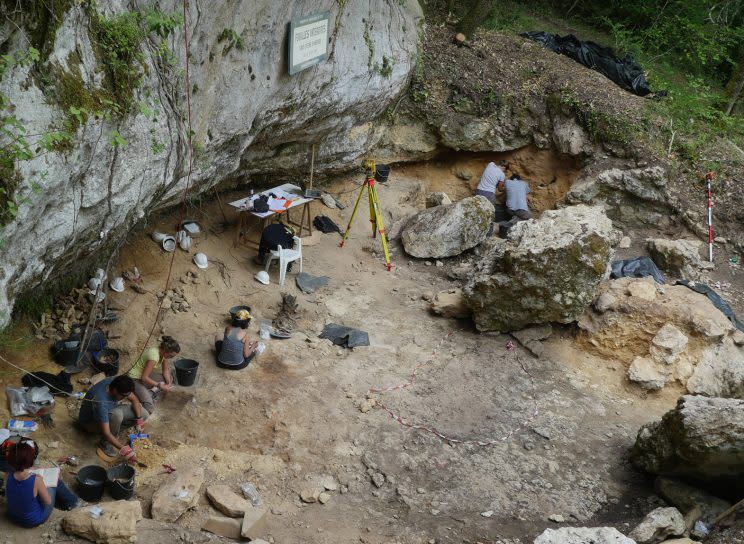It turns out archaeologists were using pointillism long before Van Gogh made it famous

He is well-known for his use of the technique of pointillism – using tiny dots to create a large image.
But it seems Van Gogh and other leading artists weren’t the first to use the method, after archaeologists found evidence of the ancient origins of the technique on limestone blocks created 38,000 years ago.
The hoard of 16 engraved blocks – complete with images of mammoths using the technique – were found during an excavation in France’s Vézère Valley.

Anthropology Professor Randall White, of New York University, said: “We’re quite familiar with the techniques of these modern artists.
“But now we can confirm this form of image-making was already being practiced by Europe’s earliest human culture, the Aurignacian.”
MORE: Good news, ‘cat ladies’ – owning the pets doesn’t pose any risk to mental health
MORE: Wheelchair-bound pensioner, 96, becomes one of UK’s oldest murder suspects
Pointillism was developed in the 1880s and adopted by 19th and 20th century artists including Vincent Van Gogh, Georges Seurat, Camille Pissarro and Roy Lichtenstein.
But major discoveries by Prof White and his colleagues, which include images of mammoths and horses, confirm that a form of the technique was used by the Aurignacian – the earliest modern human culture in Europe.

The findings, published in the journal Quaternary International, add weight to previous discoveries, such as a rhinoceros from the Grotte Chauvet in France formed by the application of dozens of dots, first painted on the palm of the hand, and then transferred to the cave wall.
Earlier this year, Prof White’s team reported the uncovering of a 38,000-year-old pointillist image of an auroch or wild cow.
And now they have found another pointillist image – this time of a woolly mammoth – in a rock shelter of the same period known as Abri Cellier.

In 1927 excavations at Abri Cellier yielded 15 engraved or pierced limestone blocks that have served as a key point of reference for the study of Aurignacian art in the region.
In 2014, Prof White and his colleagues returned to Cellier looking for new engraved images and to their surprise found the 16 stone blocks.
One of these, broken in half prehistorically, was found in place with a radiocarbon date of 38,000 years ago.
And the remaining 15 blocks, including the pointillist mammoth – one of three mammoth figures recognised during the new work at Cellier – had been left on-site by the 1927 excavators.

 Yahoo News
Yahoo News 


